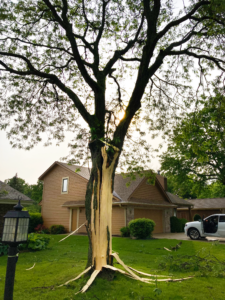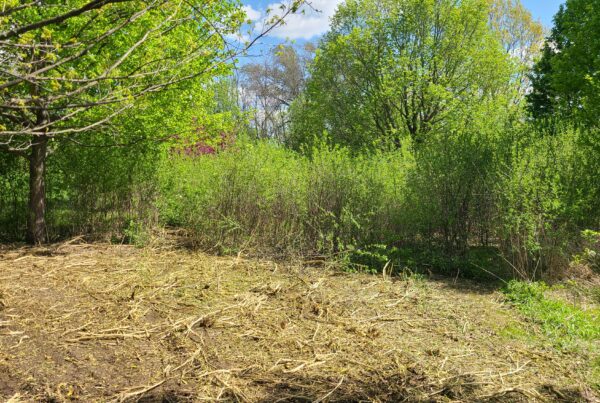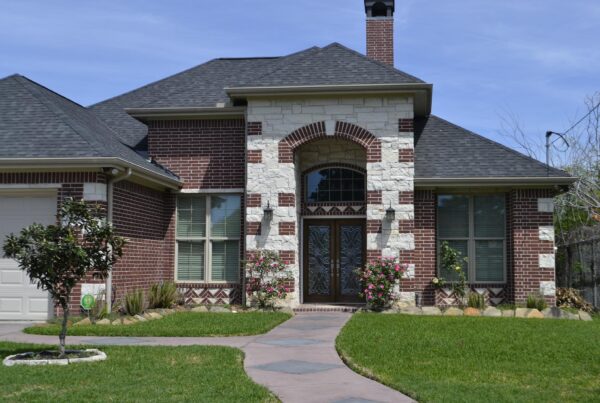 ATE field crews recently responding to customer calls found this honey locust tree (pictured) on a residential property after strong storms ripped through Greenfield. A lightning strike blew the bark off the lower section of the trunk and created a split in the main trunk union. Upon further inspection, our experts determined there was no chance to save the tree, so it was removed.
ATE field crews recently responding to customer calls found this honey locust tree (pictured) on a residential property after strong storms ripped through Greenfield. A lightning strike blew the bark off the lower section of the trunk and created a split in the main trunk union. Upon further inspection, our experts determined there was no chance to save the tree, so it was removed.
With the summer storm season just getting underway, we can expect more threatening weather to move through our area, so in the aftermath, there are ways to check for signs of tree damage following a lightning strike:
- Strips of bark torn or blown away, resembling a banana peel at times
- Leaves drooping in the tree’s canopy
- Cracks and slits recognizable along the trunk or vertical limbs
According to the National Weather Service, a typical lightning strike can contain 300 million volts and convey 30,000 amps. An attack of this magnitude can instantly heat a tree’s sap to more than 50,000-degrees Fahrenheit causing a tree’s cells to explode.
“Tree survival depends on several factors,” says Dean Ziemienski, vice president of American Tree Experts and a certified arborist. “If the strike only impacts one side of the tree, it’s possible the tree will seal the wound and survive. But if lightning passes through the tree, especially the trunk, it may not recover.”
“In some cases, you might not notice any physical injuries to a tree above ground,” adds Ziemienski. “Electricity damages roots, which can also kill a tree. One of the best ways to protect trees year-round is by following a Plant Health Care (PHC) maintenance program. Keeping your trees watered, properly mulched, fertilized and pruned will maintain tree health before storms strike and give them a better chance of recovering.”
To prevent damage from lightning strikes, lightning protection systems can be installed to deflect high voltage away from the tree and into the ground. These systems can be quite costly to install and is typically used only on very high-value trees that may be more prone to a lightning strike. Consult with our team if you are interested in this option or have questions.




